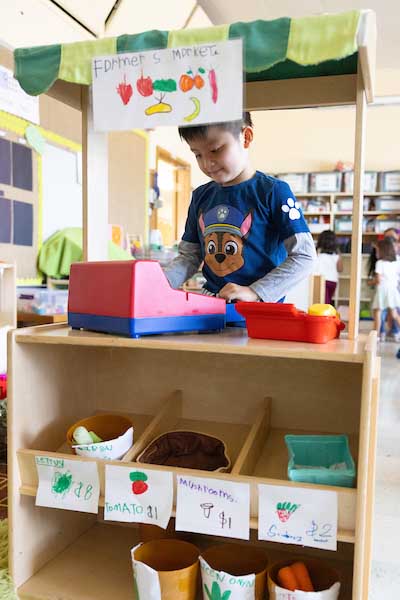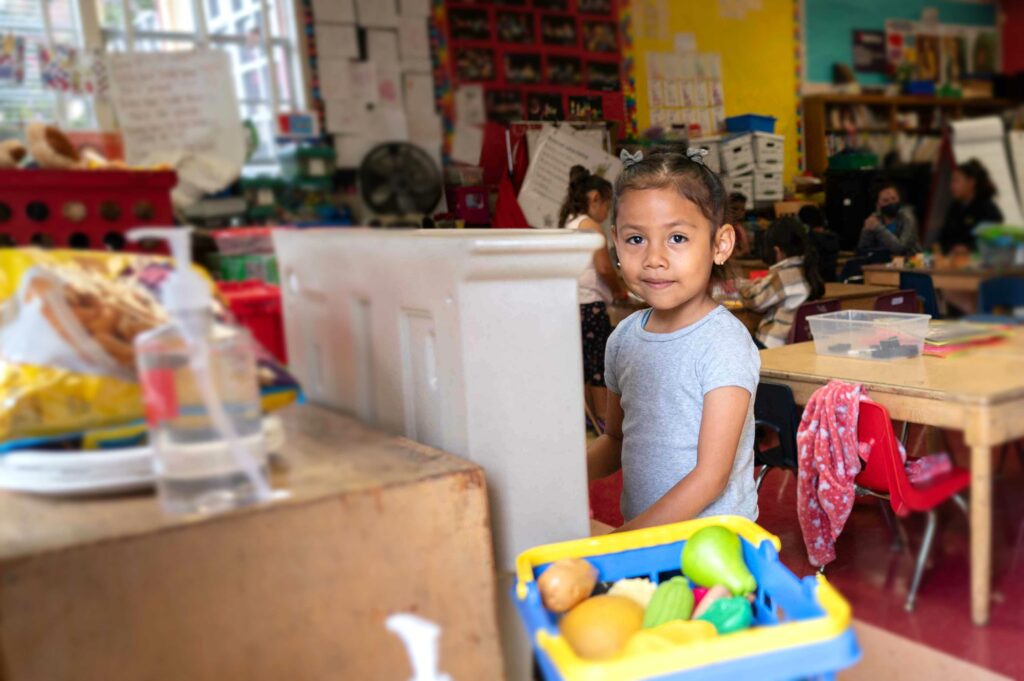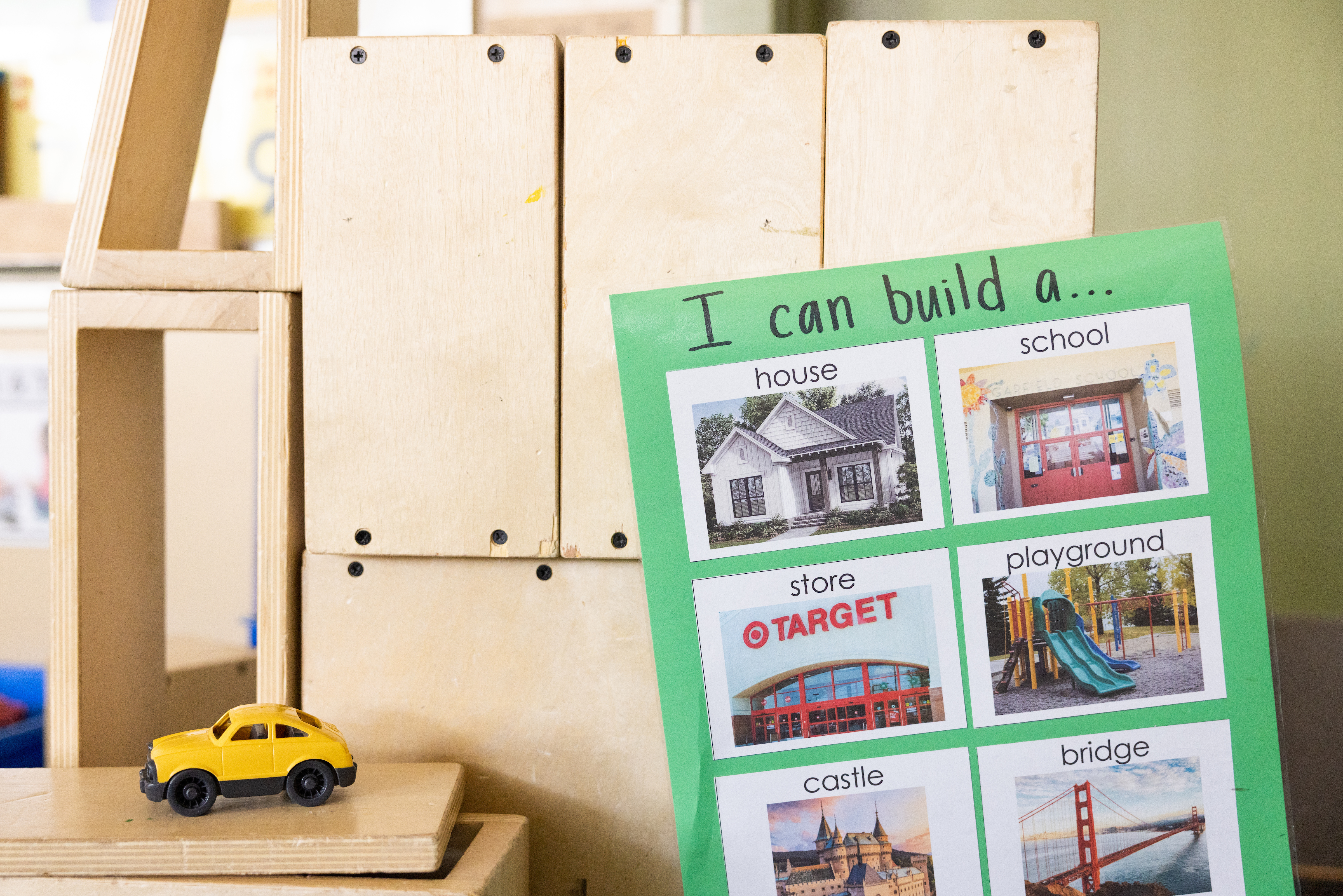What role should play have in early childhood education?
A quest for enhanced learning outcomes over the past few decades has resulted in increasing emphasis on structured academics beginning in preschool. There are concerns that play is, for the most part, disappearing in planned early childhood environments.
Research shows that play vs. learning is a false dichotomy. In fact, they are inextricably interwoven in early childhood, fostering social, emotional, physical, academic, and cognitive development in an integrated, supportive manner.
This is the first of several articles where we explore play and the surrounding controversies, opinions, and current studies about its importance in early childhood education.

Nature Pre-programmed You for Play
All animals, human and non-human, are born with individually unique play circuits in our brains, much like fingerprints.
After ensuring the basics of food and shelter, play is one of the healthiest ways we can spend our time. Play can boost our creativity, help us manage stress, improve our mood and motivate us for physical activity. Play is good for our minds and our bodies!
The drive to play is as fundamental as our drives for food and sleep.
Dr. Stuart Brown, Psychiatrist, Researcher, and Founder of the National Institute for Play
The play circuits we’re embedded with at birth inform the type of play we enjoy. According to play researchers, the styles of play we gravitate toward include:
- Collecting
- Competing
- Creating/Artistic
- Directing
- Exploring
- Joking
- Moving/Kinesthete
- Storytelling
Sadly, adults sometimes lose the ability to play and can’t remember what type of activity they used to enjoy. Take this fun quiz to find out (or remember) your play style!

Play and Learning Go Hand-in-Hand in Early Childhood Education
Play and learning go hand-in-hand in early childhood education. When activated, the play circuits in children’s brains stimulate other neural circuits that become the neural pathways of many life skills. Some of the skills enhanced by play activities include creativity, communication, vocabulary, and language.
When activated, the play circuits in children’s brains stimulate other neural circuits that become the neural pathways of many life skills.
Play supports healthy physical development through large motor movement and promotes social skills and self-regulation through cooperative play activities that involve following rules, such as taking turns.
Defining Play in Early Childhood
Defining play is a difficult task as it can be subjective and situationally dependent. Generally, we all agree that:
- play is activity – something occurs when play takes place
- play is recreational – it is creating and re-creating, amusing and diverting
- play is spontaneous – it does not require rehearsal or planning
The quintessence of play would seem to be the state of mind it puts us in: a state of mind that affords us opportunities to try on and try out emotions and ideas, taking risks with minimal fear of failure.
Justine Howard, College of Human and Health Science, Swansea University, Wales, UK
What Happens When Play Disappears from Early Childhood Education?
Over the past several years, experts in various disciplines such as Pediatrics, Psychology, and Education have expressed alarm about the disappearance of play in early childhood and its long-term effects.
For example, an influential and much-referenced 10-year study in Tennessee showed that low-income children who attended free, public preschool programs scored higher on kindergarten readiness, much as expected.
However, after completing third and sixth grade, these children had lower test scores and were more likely to be in special education. Additionally, when compared to the control group they were more likely to be identified as being engaged in anti-social behaviors.
In examining the “why” behind these results, researchers found that the academic focus of these preschools:
- gave children little time for large motor activity,
- provided less “choice time” than whole-group instruction,
- failed to minimize transition time, which accounted for over 25 percent of the children’s day.
Additionally, researchers found that teachers paid more attention to children’s negative behavior than affirming cooperative, appropriate classroom behavior. Studies suggest that when teachers pay more attention to negative behavior in this way, children are less likely to develop self-control.

Research on Play and Learning Gains
The LEGO Foundation funded an examination of over 300 pieces of research that studied play in 40 countries.
They found that when children ages 3–6 are given ample time for child-led free play, they showed significantly greater learning gains in literacy, motor, and social-emotional development.
This review pulls together over 300 studies from more than 40 countries that have demonstrated a positive relationship between learning through play and holistic skills.
Learning Through Play and
the Development of Holistic
Skills Across Childhood
Areas of Agreement and Disagreement about Play
Today, educators and caregivers generally agree on the strong relationship between free play and social skill development in early childhood environments.
However, disagreement arises between those who wholeheartedly believe all learning will occur naturally through play and those who are hesitant to rely solely upon play-based learning—believing that a structured plan is required for academic learning, particularly in the vital area of early literacy.
Principles For Early Learning and Play
The following are generally agreed-upon principles for early learning and play:
- Young bodies need movement.
- A balance of abstract skills (listening, attention, and problem-solving) with constrained skills (ABC’s, 123’s) is important.
- Emphasis should be on positive affirmation rather than negative correction.
- Transition time should be minimized but also taken full advantage of (i.e. make moving from place to place fun and instructive).
- Plenty of time should be allowed for children to ask questions in order to solve problems on their own, and explore the world around them.
- Teachers must model listening skills!
Play in all its rich variety is one of the highest achievements of the human species, alongside language, culture and technology.
Dr David Whitebread, University of Cambridge
Play in early childhood settings is a fascinating and fun topic! In future posts, we’ll explore the various types and phases of play in early childhood, how to support literacy instruction within a play-based environment, the conundrum of screen time, and child agency.
Related Resources
Read more blogs about early childhood education.
From the LEGO Foundation: The Scientific Case for Learning Through Play.
Download Your Free Play Continuum Observation Sheet
Observing young students at play can provide us with valuable insights. Download this sheet to learn the different types of play behavior.
